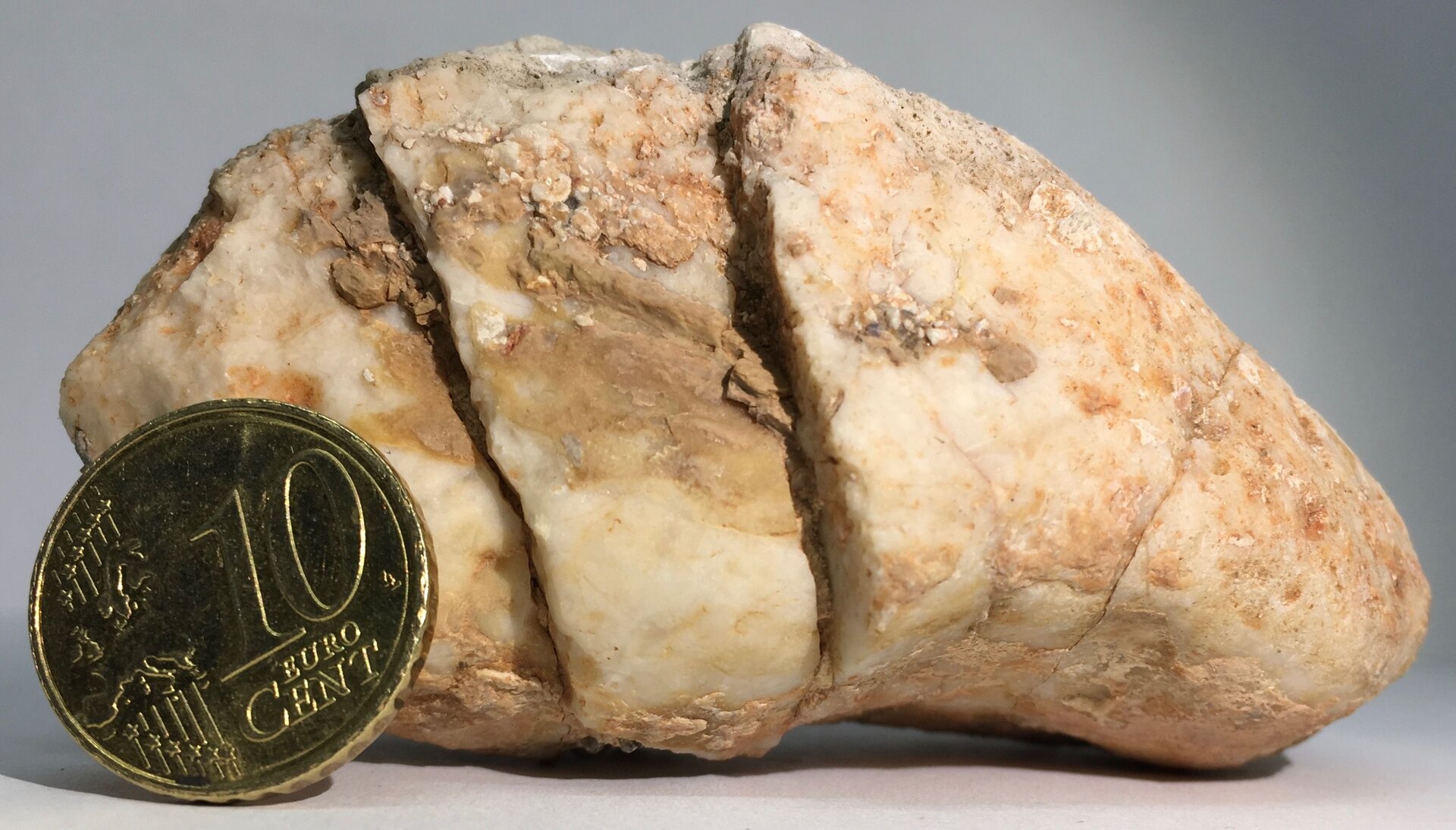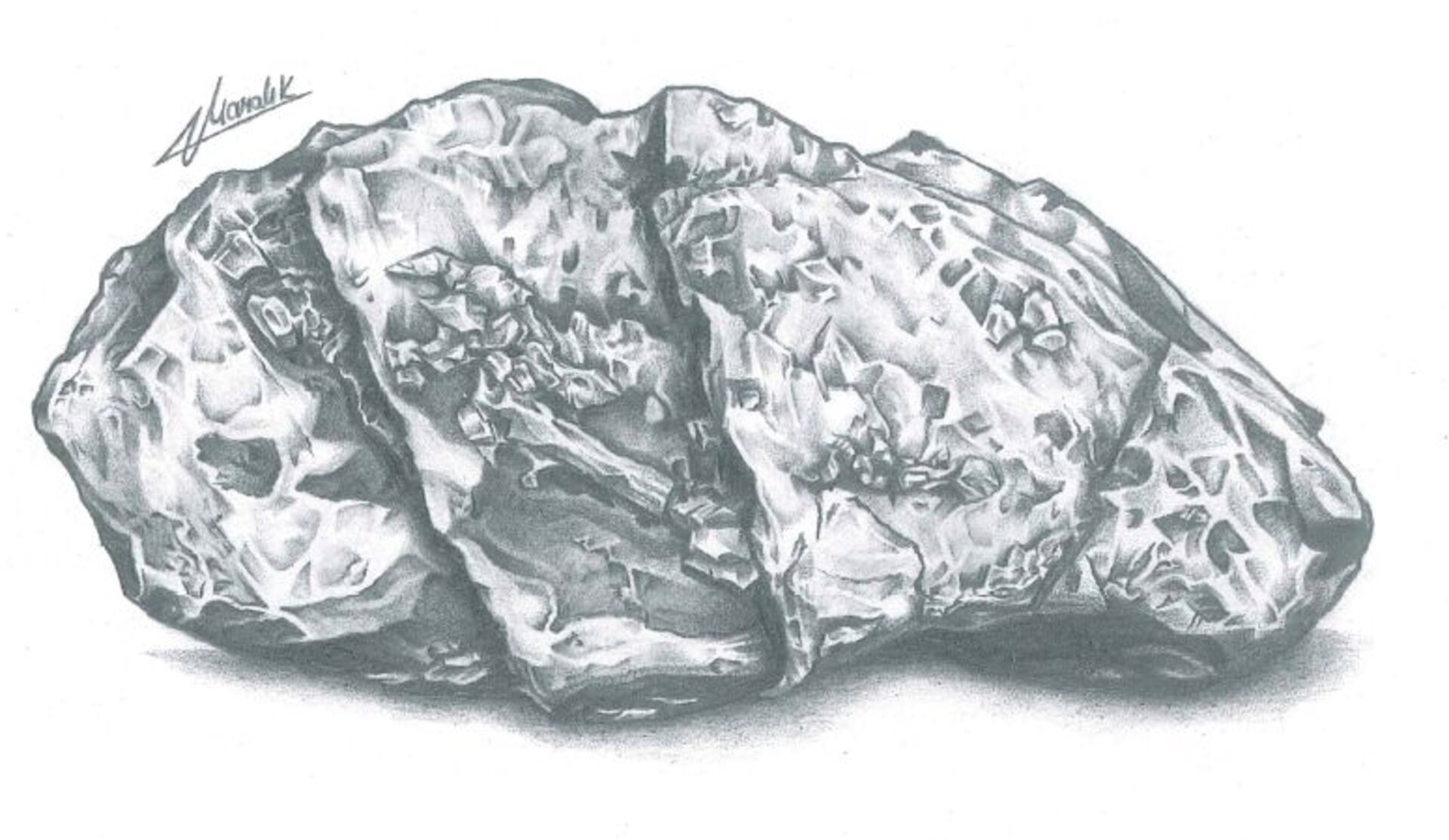This fist-sized fractured limestone pebble comes from a valley in the Austrian part of the Karawanken. The Karawanken form a 120 km long, east-west running mountain range between Carinthia and Slovenia and consist mainly of Mesozoic limestones. The portrayed limestone boulder originates from this Mesozoic rock succession; it was eroded during an early uplift phase of the Karawanken, transported northwards in rivers and deposited in the Klagenfurt Basin (the northern foreland of the Karawanken) about 12 million years ago. As a result of ongoing mountain-building processes, these river deposits were overthrust by kilometre-thick Mesozoic rock successions about 5 to 2 million years ago. Crustal stresses during this phase exceeded the compressive rock strength. As a consequence, numerous pebbles fractured, as testified by the object shown. In addition to two fractures that offset the alluvially rounded boulder surface, numerous smaller pit-like indentations are also visible on the surface. These indentations were formed as a result of pressure dissolution (dissolution of solids under the effect of pressure) through contact with neighbouring, harder rock grains.
This limestone pebble, rather inconspicuous at first glance, thus reveals a great deal of information about the immeasurably slow tectonic processes, which alter the appearance of our planet ever since its formation.
Interactive 3D model of the limestone pebble on SketchFab: https://skfb.ly/6R7rQ
Web link to the tectonic rock collection: https://www.structures.uni-jena.de/tektonische-sammlung
Kamil Ustaszewski

